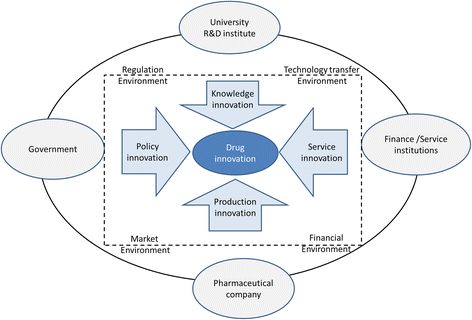
The pharmaceutical industry has undergone significant transformations, driven by the need for rapid innovation and adaptation. Contract Development and Manufacturing Organizations (CDMOs) have emerged as key players in this transformation, leveraging advanced technologies and strategic partnerships to enhance their capabilities and deliver high-quality solutions to their clients.
Digital Transformation: A Critical Component
Digital transformation has become a critical component for CDMOs in the pharmaceutical industry. The disruption to global supply chains caused by COVID-19 has led many CDMOs to rethink their business priorities and focus on enhancing their operational risk profiles. This has led to a significant uptake of advanced digital manufacturing and analytical technologies, which are essential for realizing shorter development timelines and achieving stable, secure supply chains.
Digitalization encompasses a vast range of technologies, including advanced data analytics, artificial intelligence, and the Internet of Things (IoT). These technologies enable CDMOs to provide operational insights and efficiencies, enhancing their customer service and competitiveness. As Wayne Hull, Chief Digital & Technology Officer at PCI Pharma Services, notes:
“As a CDMO, we are required to manage the complexity of speed, service, quality, regulatory compliance and capacity, across manufacturing, clinical and commercial segments. Progressing down a digital transformation path is now business as usual. Placing digital transformation at the core to deliver pristine customer service is where the ‘magic’ lies. Soon, system integration across the bio/pharma industry ecosystem will be required and expected. Fortunately, CDMOs are best positioned to help pharma and clinical innovators leverage digital technologies, including integrating their systems with their suppliers and partners.”
The Biologics Boom
The biologics space has experienced an undeniable boom, driven by the race to develop vaccines and immunotherapies for COVID-19. This growth has led to the creation of numerous biotech unicorns, many of which have crossed the $1 billion milestone. However, these biotech companies face significant challenges in bringing their new discoveries to market, requiring specialist equipment, aseptic processing, and expert insight and support across the entire journey.
CDMOs with dedicated biologics capacities are well-positioned to support these companies in getting their innovations to market. As a result, many CDMOs are investing in new lines and facilities to accommodate further growth and support accelerating patient access to the latest biotech innovations.
Oral Solid Doses for Cancer Treatment
The rise of oral solid dose (OSD) forms for cancer treatments is another key trend in the pharma industry. OSDs offer a more patient-centric alternative to parenteral administration, but they often require resource-intensive, sophisticated formulation solutions to enhance their bioavailability. While parenteral drugs are often easier to develop and can be brought to market faster, the patient centricity of OSDs makes them worth the additional time and financial investment.
Strategic Partnerships and Expansion
CDMOs are increasingly forming long-term, strategic partnerships with marketing authorization holders (MAHs) to confront the technology and cost challenges of advanced therapies. These partnerships enable CDMOs to expand their key capabilities and portfolios across treatment types and along the value chain, delivering high-quality solutions at attractive costs to customers.
To thrive in today’s fast-changing pharmaceutical supply market, CDMOs need to act now. This includes evaluating their key capabilities and differentiators, developing an overarching strategy, and expanding their portfolios to deliver optimized solutions to their MAH customers. Already, 37% of CDMOs provide end-to-end services across the value chain, while 28% offer a portfolio across all three modalities: small molecules, large molecules, and advanced therapies.
Conclusion
In conclusion, CDMOs are transforming the pharmaceutical industry through digital transformation, strategic partnerships, and expansion into new areas such as biologics and OSDs. As the industry continues to evolve, CDMOs must prioritize their investment in advanced technologies and capabilities to remain competitive and deliver high-quality solutions to their clients.
References
- Pfizer CentreOne. (n.d.). Three Key CDMO Trends for 2022 and Beyond. Retrieved from https://www.pfizercentreone.com/insights-resources/articles/three-key-cdmo-trends-2022-and-beyond
- Strategy&. (2022). 2022 Global CDMO Study of Pharmaceutical Operations. Retrieved from https://www.strategyand.pwc.com/de/en/industries/pharma-life-science/2022-global-cdmo-study.html
- Contract Pharma. (2024). Pharma 4.0: CDMOs Digitalize To Enhance Customer Value. Retrieved from https://www.contractpharma.com/issues/2024-05-01/view_features/pharma-40-cdmos-digitalize-to-enhance-customer-value/
- PCI Pharma Services. (n.d.). Digital Transformation: A Critical Component for CDMOs in the Pharmaceutical Industry. Retrieved from https://pci.com/resources/digital-transformation-a-critical-component-for-cdmos-in-the-pharmaceutical-industry/
- EY. (2022). CDMOs are becoming emerging technology leaders. Retrieved from https://www.ey.com/en_qa/strategy/how-cdmo-companies-are-leading-innovation-for-pharmaceutical-partners























